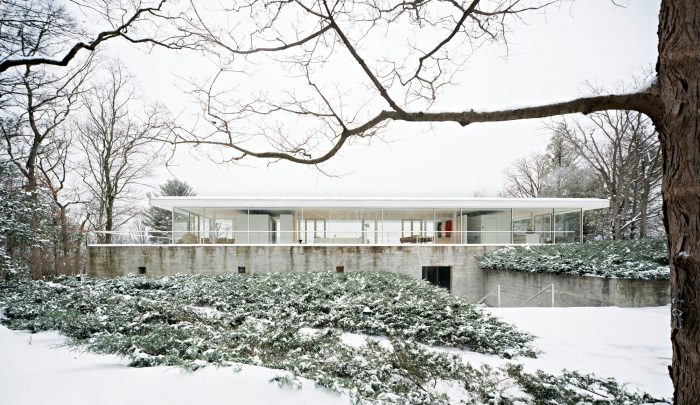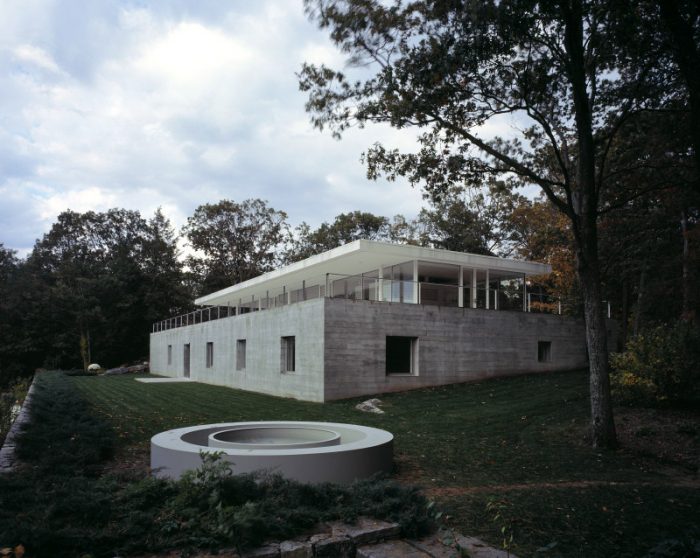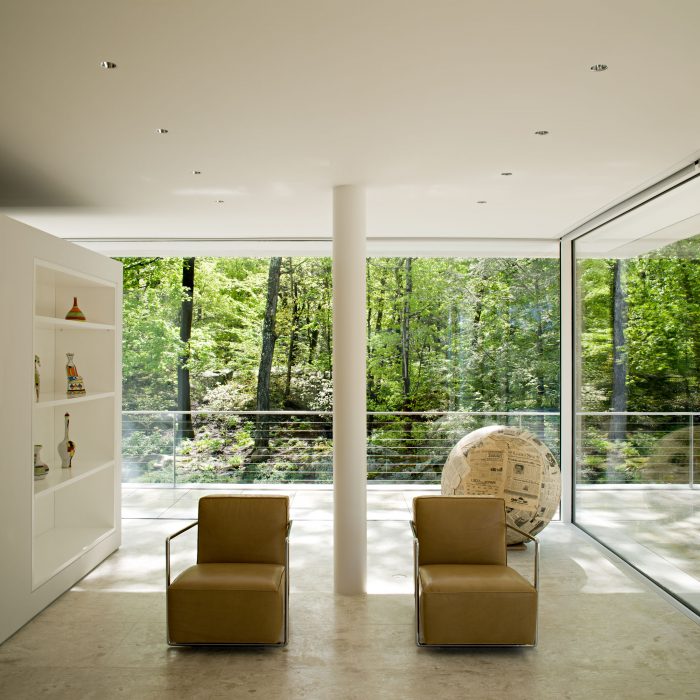
- Permbajtja
- prev
- next
- prev
- next
Mies van der Rohe Influence in the XXI Century
by Marinela Pjetri, "Thresholds of XX century architecture" EPOKA University
With a legacy that spans scales, Mies can der Rohe, followed through his own beliefs in rchitecture, building design, “God is in details”, he declared, favoring the honest structural expression of concrete, glass and steel. Building art, he believed is always… the spatial execution of spiritual decisions. With a delicate and detailed sense of proportion and
an eyes for the innate luxury of construction materials, the buildings both in Germany before and during his time at the Bauhaus and after his immigration to the US are close to perfectly articulated modernism. To this day, his modern building, especially the modern houses inspire a quiet awe, as concise in terms of space as his much-celebrated dictums are in words. Utilizing simple geometries and clean lines, Mies has created a brand of architecture style that
now is ever-present throughout cities of the world. His creations have one thing in common, an attentive combination of functionalism and the rejection of traditional spatial systems, which reak the barrier of supporting structures, to rely of the use of glass for enclosure. His works testify the blurred line of the building’s interior and exterior through the open-plan and flexible space.
Even in the contemporary architectural works around the world, traces of Mies, flourish and persist in material details and form. The lines of his architectural poetry that indicate and validate his timeless mantra “less is more”, further pinpointing evidence to his genius. Mies continues to influence and inspire the aesthetic language of many contemporary architects. The following building emanates the spirit of Mies van der Rohe and his lasting architectural style.

OLNICK SPANU House by Alberto Campo Baeza
Olnick Spanu House by Alberto Campo Baeza, is a design that falls under Mies’ preferred category of “skin and bones” architecture, enlivening its simple cubic volume through the rich use of glass, travertine marble and paved stone, to blend the boundaries between indoor and outdoor living. Located in New York, and completed in 2008, the glass and concrete house is situated on a concrete platform on the bank of the Hudson River, designed for a couple of art collectors.
The place of Olnick Spanu House, is of a sincere calmness, where after a day of rain or fog, a great light reflects in the mirror of the river’s deep waters. A place where the colorful twilight and the fresh air make it a scene very close to heaven. In this impressive site of nature, Baeza establishes vast planes that delineate from thin columns proportionating the space.
Subject to tension, the space layered between the two extensive horizontal planes, floor and ceiling takes the collectors as close as possible to the very edge that explodes in the surrounding landscape, or caves them in the collected art. The subtle balance, with the zen experience and intimate spaces are combined with three axes. The vertical axis of the human figure stands strongly on the pedestal of the floor covered by the draped ceiling of the sky above; the transversal axis, marked by the wall’s direction owards the panorama that coexists with the perpendicular longitudinal axis along which the art pieces are arranged.

The platform that underlines the landscape in front of it enhances another aphorism of Mies. A large and long box is built, 37 meter long by 16 meter wide by 3.6 meter high, with strong concrete walls that accentuate its link to the land. Its roof of the box is flat, paved in travertine and stone, so that is used. From protection of rain and sun, over the stone plane, a light roof by 30 meter long by 12 meter wide by 2.7 meter tall is raised and held by ten cylindrical steel pillars, arranged by a system grid of 6x6 meter. The system of grid is another feature that pinpoints influence from Mies and his style, just like in the Crown Hall, or Barcelona Pavilion. This roof cantilevers three meter along all of its sides, which under itself is a space enclosed by a glass box to make it habitable and to contain the back row of columns within it and leaves the front columns outside, to further highlight transparency above a landscape as a backdrop of life in the longitudinal axis of the house.

The construction of the platform resembles a large table with ten legs, where three areas are created within it, divided by two with boxes that don’t reach the ceiling, holding the service spaces and stairs. The central space is the living area, and the dining area with a large white table and a set of Brno chairs and Barcelona chairs that make direct reference to the modernist master. Closer to the swimming pool side is the kitchen, and on the other side, in the appearance of a pensatorio, is the area around the hearth. Baeza pout below the glass box- the upper level, a concrete box, where inside of it the bedrooms and baths are housed.

This ground floor of the house sits in the footprint of an old hunters shed, in a soil mainly bedrock. In its central vestibule, connecting the entrance and access to the garden, there is gallery for the Art Povera pieces and other contemporary Italian art is isplayed. The design of the inside of the house in two levels of life, makes possible the coexistence of the intimate, private life of the family rooms. And the other life of the belvedere, open to nature. If the upper glass volume serves as a niche in nature, from where the views dominate the terrain and the landscape on which it resides always gazing and present, the ground level has different priorities. It is quiet, self-absorbed, and in dialog not with nature or life, but with the private collection.

Conclusions
These two distinct pavilions, the transparent belvedere on the edge of the cliff and the metaphorical cave providing sanctuary for the art collection, give life to the duality: cabin over the cave, the tectonic piece over the stereotomic piece always mindful of the human scale and the work of art. Baeza manages to overlap the landscape and the house just like in his drawings, a relationship with architecture surrounded by life, yet keeping a distance as if flying above, blending art with daily life in e suspended space, a space for family and friends. The Olnick Spanu House is a contemporary reminiscence of the Miesian mantra, where Baeza conveys his own way of design interpretation